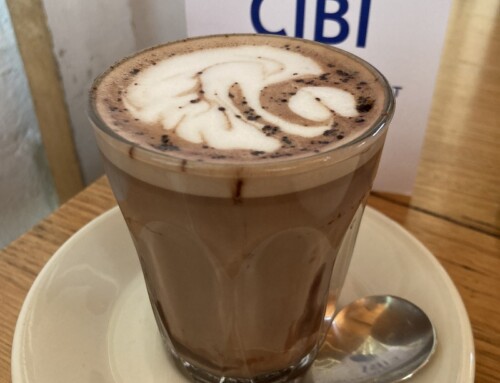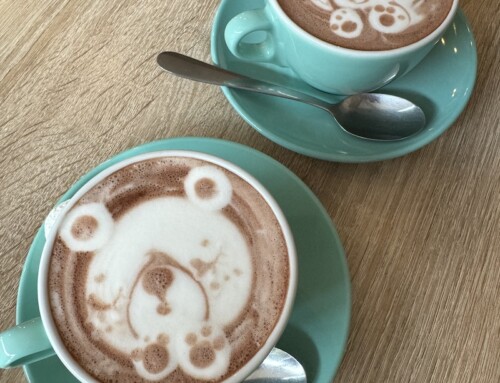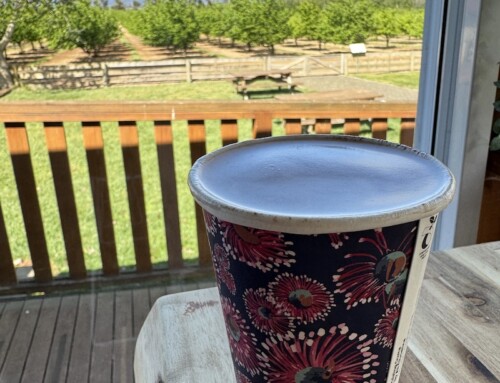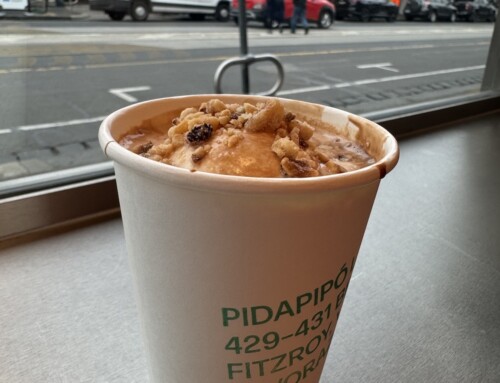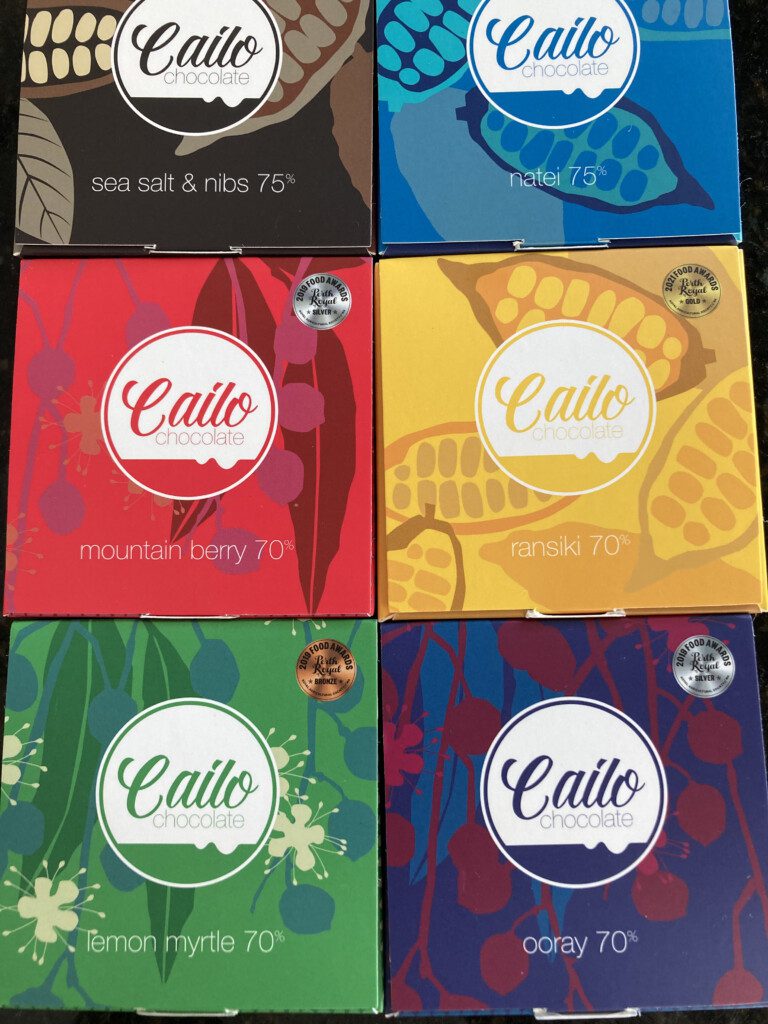
Mark from Cailo Chocolate arranged to meet up with me at Babylon Café in Leederville in Perth. It wasn’t immediately clear whether this was a coffee shop or a succulent garden … “It’s both, everything is amazing here but don’t order the hot chocolate” I was told. Could they not offer Cailo hot chocolate I ask hopefully?
We find a seat outside amongst the plants and start talking chocolate. Mark and Simona started Cailo Chocolate back in 2016 here in Perth, but the inspiration came much earlier than that, and from much further away. They lived in California in the early 2000s and would often go to Santa Barbara. One day while paying for a coffee he saw some little bars of chocolate by the cash and grabbed one. “The packaging said made from bean to bar on the back and that got me really curious. I had never thought about how chocolate was made before that”. There was an email address on the back of the packaging, so Mark contacted Mike from Twenty-Four Blackbirds Chocolate and asked him what this bean to bar thing was all about. “I thought that it might be a good thing to do when we moved back to Perth”.
Getting Started
The challenge was that when they got back and looked into it, they couldn’t find any quality beans. “Shipping was just too complicated to Australia.” A chance encounter with Jose, a Panamanian who was bringing direct trade coffee into Perth resulted in an opportunity to bring in Panamanian cacao in the same shipments. “He said he wasn’t sure what he was going to do with it so I said we should make chocolate, and that’s how Cailo started”.
Mark admits that before making chocolate, he wasn’t exactly a chocolate connoisseur. “Being from Swiss parents, I grew up thinking that Lindt was the best but really it isn’t. I realised that there were different levels of quality in chocolate. We did a taste test with some friends with a Lindt bar and some chocolate we made in the very early days, and it already tasted better than Lindt!”. Luckily, around this time Bean Bar You was getting started and Mark signed up to receive their monthly boxes filled with quality bean to bar chocolates from around the world. “We didn’t have much craft chocolate in Perth to taste which also meant that people here didn’t know why it was so special. We would have people come up to tastings and say wow why is it so expensive? Why should I buy this compared to something else? The knowledge of bean to bar was very low”.
It didn’t take long before Cailo was being sold in stores such as the ReStore in Leederville, but people just weren’t buying it. “They didn’t know what it was and that’s when we started selling at farmers markets. There you can interact with people and tell them about your chocolate and then when they see it in stores, they know what it is and will hopefully buy it. That has worked well for us”.
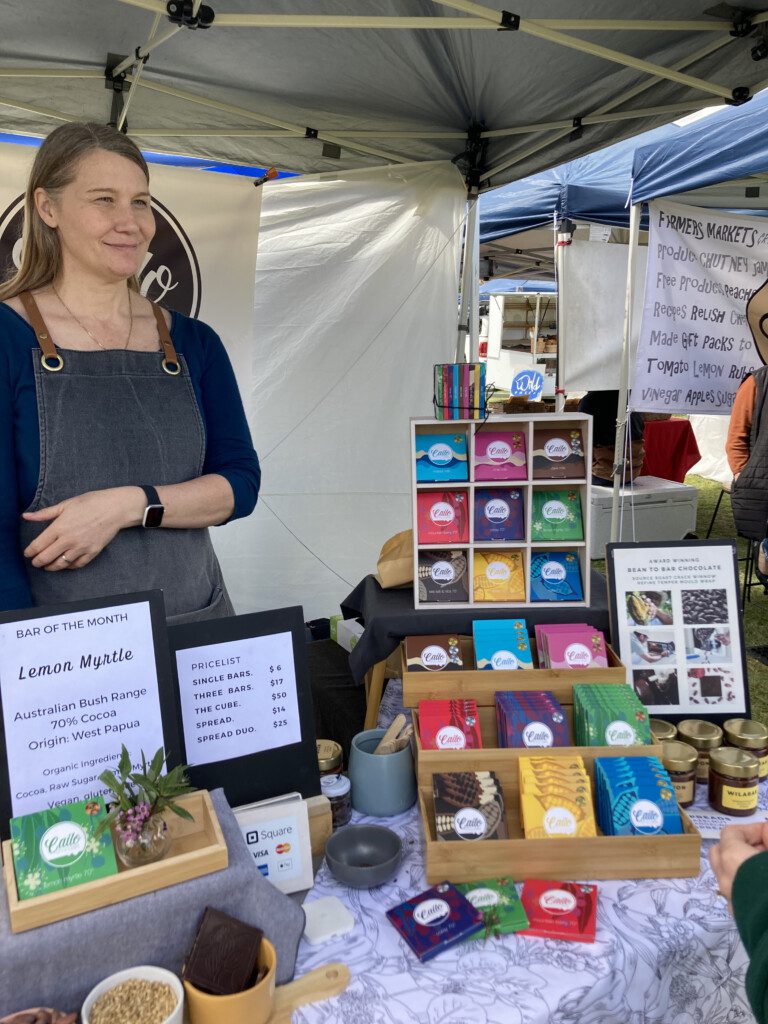
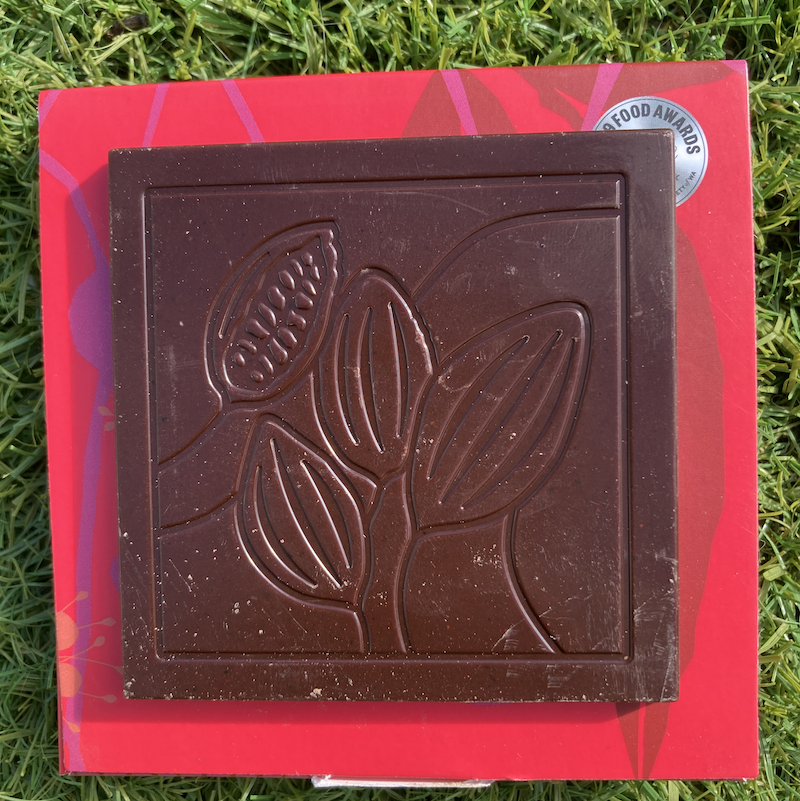
In Search of Quality Cacao
Today, Cailo no longer uses Panamanian cacao and instead is focusing on sourcing closer to home. “We can make a great chocolate with Madagascar or Dominican cacao but why when so many people are already making good chocolate from those beans. We have enough growers in our region.” That’s when they started looking at other origins and stumbled upon the Solomon Islands. “We did some trial batches with two or three different growers. I remember after I roasted them in my oven, I could already tell this was special”. Today Cailo has bars made with cacao from the Natei Family on Guadalcanal Island and from Lenard Nahurua on Makira Island. Soon after that, they connected with Bidji cacao and were introduced to Ransiki cacao. “We already had a connection to West Papua through our church and we were keen to support West Papuan cacao if it was good because if it isn’t good it won’t sell. Luckily, it was great.”
Good beans come from proper knowledge of drying and fermentation and not all farmers have this. “I remember early on we were offered some beans from a place with an awesome story and that was doing a lot to support local communities, but the chocolate tasted awful.“ In the Solomon Islands they work with a social enterprise that employs local women to do the drying and fermentation so farmers can bring in often very small batches of cacao and the quality is still guaranteed. “When we used to work with cacao from Panama, different farmers fermented differently but all the beans were mixed together in the end so there was a lot of variability. We are passionate about supporting local growers but if the chocolate isn’t good enough and we can’t stand behind it, the chocolate won’t sell. It’s sad, but that’s the way it is.”
And what about Australian cacao? “My heart says it would be great, but my head says it will never happen. We would have to charge so much money for a bar. We toured the cacao growing region of Australia and I think there is still a lot growers need to learn here about drying and fermentation, but also choosing the right varieties not for high yield but for quality. In Hawaii they are doing it well, so it is clearly possible. Maybe one day we will get there”.

Craft Chocolate in Australia Today
Things have changed a lot since Cailo first started. Today there is an oversupply of good beans so the problem of not being able to find beans has changed. But consumers are still slow to come around. “Very early on we did a tasting of Cailo in a store in Los Angeles and I was blown away by how many people knew about bean to bar. I didn’t have to explain any of it to them.” What did seem to work well were inclusions “we realised not everyone likes straight dark chocolate, so we decided to play around with Australian natives”. Today their lemon myrtle, mountain berry and ooray (Davidson’s Plum) bars are very popular. “When we launched them, we were prepared to make some changes, but they have all done really well. One year in MasterChef Australia they were all talking about Davison Plum and we already had a bar featuring that so people recognised it. It’s great to see more people appreciating the native ingredients we have here in Australia”.
It is hard to believe that chocolate making isn’t Mark and Simona’s full-time job, but the reality is that many of the best chocolate makers do this as a side job. Mouldings happen in the evening and weekends and the melangeur runs continually in their home kitchen (certified as a commercial kitchen). While they have considered scaling up, it just doesn’t make sense “We could lease a site and have a store front with a café, but the sad thing is that it just doesn’t pay. It’s a sad reality of the craft chocolate world that most people are small and micro because they have to have other jobs. And if you want to scale up you need to start making some choices you might not want to make around ingredients and packaging that we aren’t prepared to make.”
This leads us into a discussion about how important packaging is “Our chocolate is small, it has no air in it, it is just the size of the chocolate. It is honest and simple and handmade”. Others, he notes have fancier packaging but often these can be misleading. “People will buy the chocolate for the packaging, not necessarily for the chocolate.”

Cailo’s Hot Chocolate
I save my most important question for last. Do you like hot chocolate? “I’m not a massive drinker but if I had a choice, it would be Ritual hot chocolate in Utah with snow outside. I like it with full cream milk and dark chocolate. That richness of the full cream milk and the intensity of the 70% dark chocolate goes well”. I ask about getting Cailo’s hot chocolate into some of the local cafes. “We tried to approach cafes before COVID struck. One owner said that only Kindergarten kids ordered hot chocolates. They weren’t keen because it would be more expensive, and the kids wouldn’t know any better. It also doesn’t help that Perth is a hot place. We are trying to tell them they could have their usual hot chocolate option and then a more expensive single origin option on the menu, but it hasn’t been easy.”.
A few weeks after our interview, I picked up a bag of hot chocolate from Simona at Kyilla Community Farmers Market (200g for $15.50) and brought it with us on a trip camping up north at Shell Beach. It is sold in blue bag that is easy to reseal. The ingredients are simply cocoa beans from Solomon Islands and organic raw sugar from Queensland (it is a 75% drinking chocolate). If you are lucky enough to get your hands on a bag (they are also available for sale online) enjoy the aroma of the chocolate in the bag. It was beautifully fruity and bright, with some caramel notes on the morning we tasted it. We melted 25-30g with 250ml full cream milk. It melts well without any powdery mouth feel. This is a crowd-pleasing hot chocolate, a perfect sip.
These days it is rare if we don’t have at least one Cailo bar in our home, and our favourite is definitely the Ransiki 70%. You can read all about it here. It is like a tropical party in a chocolate bar. Also be sure to try their Wilarak Chocolate and Sandalwood Nut Spread made using Sandwood nuts from a farm in York, Western Australia (Wilarak is the local Aboriginal name for Sandalwood nuts).
For more about Cailo, visit their website or follow them on Instagram.
This interview is part of a special series exploring and celebrating Australian craft chocolate. Sign up to my newsletter SIPS for regular hot chocolate news from Australian and around the world.




